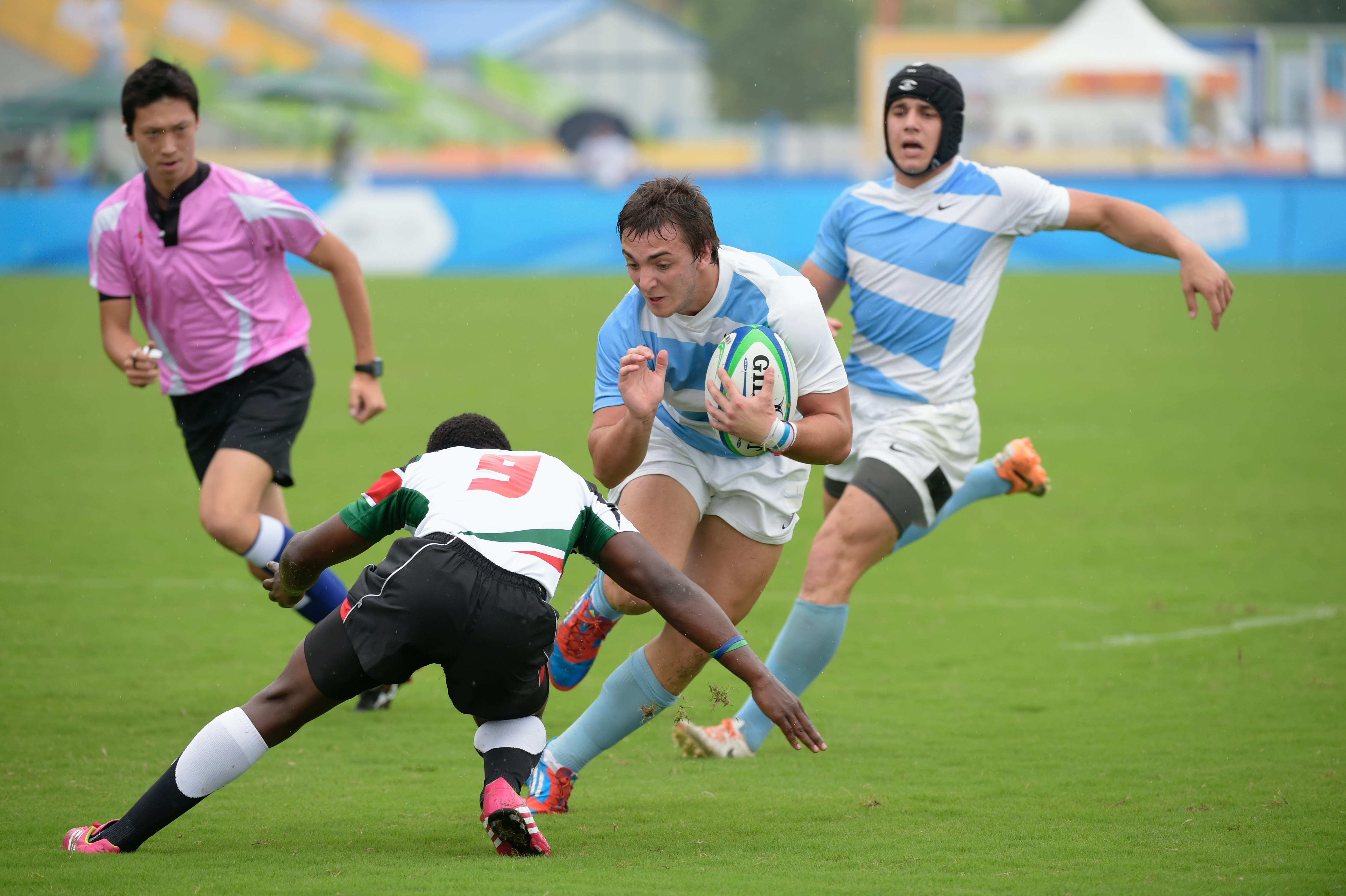Thigh contusion (dead leg)
This is an impact injury to the thigh. It is very common in all contact sports.

In technical terms, an injury that results from a direct blow to the thigh is called a thigh contusion, but it is also colloquially referred to as a dead leg or a charley horse. It is the outer part of the muscle that is most often injured. Thigh contusions are amongst the most common acute thigh injuries across all contact sports.
Symptoms
The injured athlete will often describe a direct blow to the thigh. Many find that they get the injury during a game, but that it doesn't become a problem until later once the muscle is cold. Pain is the most common symptom, but swelling and limited range of motion can also occur. Sometimes it is also possible to feel a dip in the muscle.
Causes
All muscles are surrounded by a sheath, and the muscle and the sheath are collectively called a compartment. Recovery time will vary depending on if this sheath is injured or not.
Tearing of the sheath - intermuscular injury
Some of the muscle fibres will tear following a thigh contusion. This leads to internal bleeding. If the surrounding sheath is damaged, the blood can flow out and spread. This reduces the pressure in the thigh, which often leads to less pain and less movement limitation. This type of injury is known as an intermuscular injury and often result in discolouration and bruising.
Undamaged sheath - intramuscular injury
If the sheath around the compartment remains intact with injury, blood cannot flow out and spread. Pressure will then increase as the compartment expands. This is often more painful than if the sheath was injured. It also restricts movement to a greater extent. This type of injury is known as intramuscular, and is considered more serious.
Diagnosis
A diagnosis is made based on the symptoms and the way in which the injury occurred. It is important to clarify the severity of the injury. This can be described as mild, moderate, or serious. The time it takes before the athlete can return to sport may vary from a few days to several weeks.
Indicator of severity
The range of motion 24 hours after the time of injury is often a good indicator of the extent of the damage. The less movement, the more severe the injury.
Treatment
The first 24 hours from the time of injury is the most crucial period for treatment of a thigh contusion. The athlete should immediately be removed from activity and treated according to the PRICE principle. Crutches might be helpful if putting weight on the leg causes pain.
Treatment is divided into 4 stages:
- Controlling the bleeding (the most important element)
- Building up full, painless range of motion
- Functional rehabilitation
- Gradually returning to sport
«Locking» (immobilising) the thigh in a position with the knee bent as much as possible without causing pain can be an effective method to limit bleeding. A compression bandage is applied to bind the thigh and lower leg together, keeping the knee in a fixed position.
Pain killers can be effective in the first few days, but anti-inflammatories (NSAIDs) such as Neurofen, Voltaren and Naprosyn should be avoided for the first 24 hours. The reason for this is that they can have a blood thinning effect that can increase the amount of bleeding, resulting in more pain and further decreased range of motion.
Following a short period of immobilisation, the athlete should begin with gentle mobilisation exercises. For example, cycling (pain-free) using an exercise bike. After this, the athlete should begin with active mobility exercises and gradual strength training. Seeking advise from a skilled physiotherapist to help assist with sport-specific rehabilitation is recommended.
Return to sport
The prognosis following a thigh contusion injury is good. With intermuscular injuries, most athletes will be able to return to sport within a few days, but if the injury is severe it might take up to 2-3 weeks. The time for a return to sport is longer with intramuscular injuries, but very few athletes will develop any long lasting problems.


